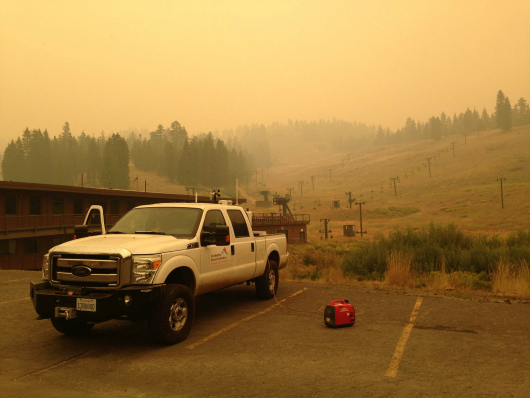
The SJSU Fire Lab’s mobile atmospheric profiling system is loaded on this truck, now at the Rim Fire (courtesy of Craig Clements).
As firefighters struggle to contain the Rim Fire near Yosemite, an instructor and his students are on the scene collecting data that could one day save lives.
Craig Clements, an associate professor with the Department of Meteorology and Climate Science, studies conditions inside and around blazes, seeking to learn how the fire and atmosphere interact, with the goal of predicting how fast and far the blaze will burn.
With funding from the National Science Foundation, Clements developed a mobile atmospheric profiling system. Cisco recently produced this video about the truck, which pulls a compact trailer loaded with the latest tech tools including lidar and sodar, using light and sound waves to track winds.
“This Thursday we are planning a deployment with NASA who will be flying the plume with an aircraft to collect air chemistry data,” Clements said.
This will be the team’s fourth visit to the fire: “On Aug. 21, my students went to Groveland, but couldn’t get close enough to get valuable data. On Aug. 23, they went to Dodge Ridge ski resort and scanned the downwind plume from below. Yesterday, they left at 8:15 a.m., drove to Yosemite and scanned the plume from the Crane Flat lookout near Highway 120 within the park. My students are processing the data now.”
The San Jose Mercury News sought out Clements expertise. He is one of the only scientists in the world studying wildfire-atmosphere interactions. You can follow the action via webcam, the incident website, and the SJSU Fire Lab’s Twitter account.

